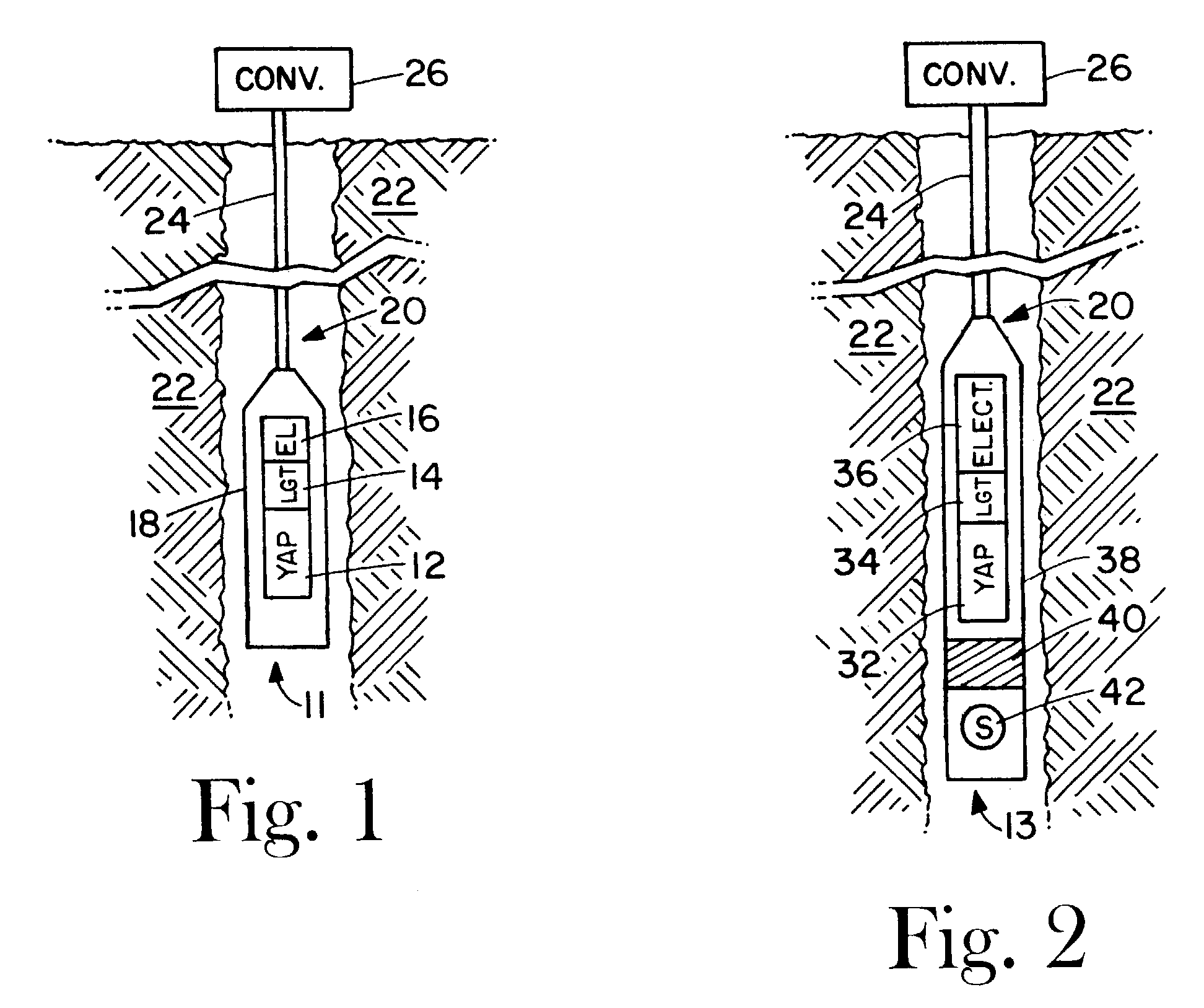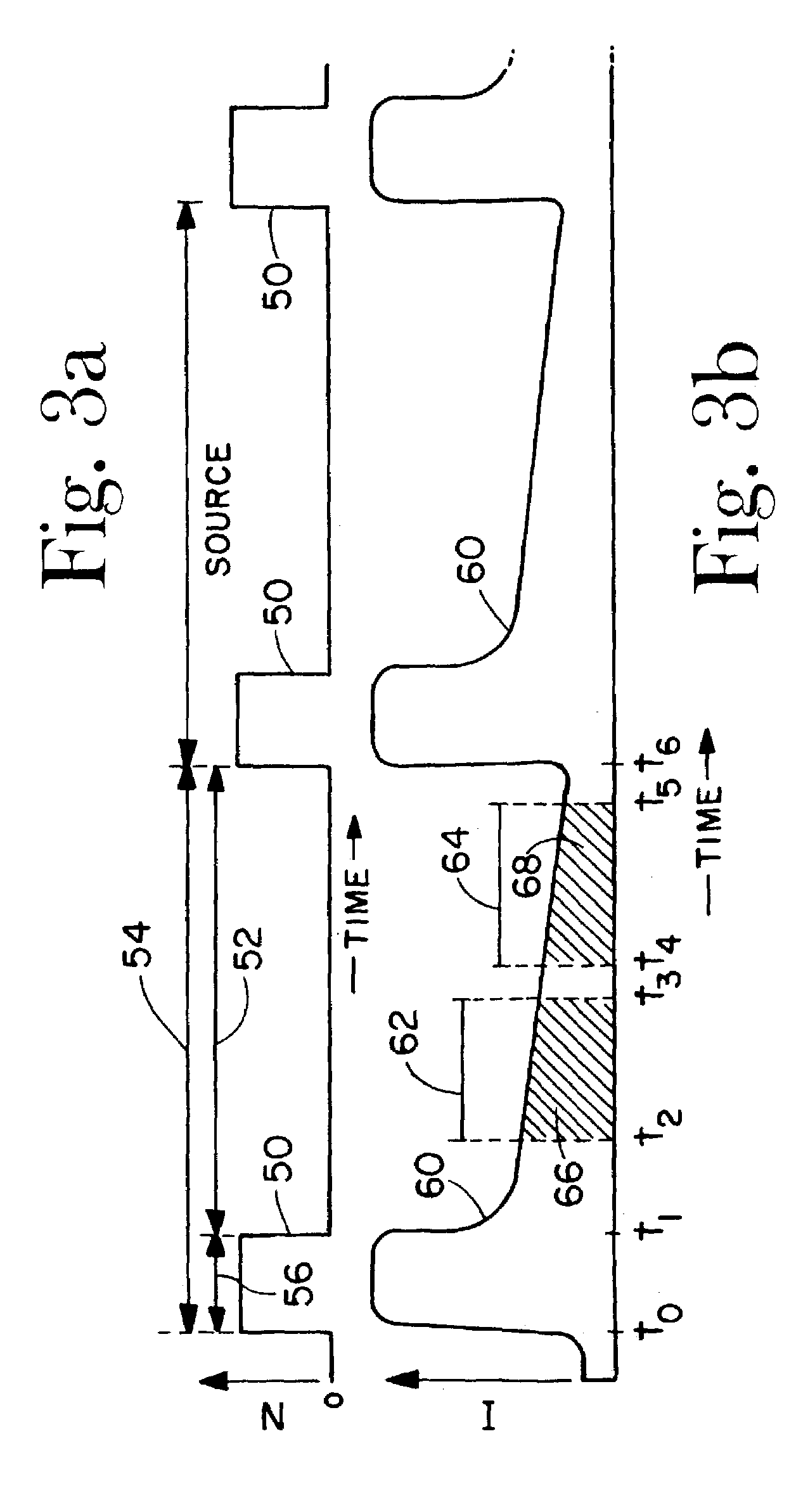Method and apparatus for measuring radiation in a borehole
a radiation detector and radiation measurement technology, applied in the direction of instruments, nuclear engineering, conversion outside reactors/accelerators, etc., can solve the problems of erroneous radiation intensity measurement, erroneous radiation energy measurement, and harsh borehole environment, so as to increase the design flexibility of borehole instruments, less shock and vibration damage, and high density
- Summary
- Abstract
- Description
- Claims
- Application Information
AI Technical Summary
Benefits of technology
Problems solved by technology
Method used
Image
Examples
Embodiment Construction
[0036]A borehole logging tool comprising YAP radiation detectors can be embodied in a variety of ways depending upon the desired borehole environs for the measurements. FIG. 1 illustrates a logging tool 11 comprising a YAP scintillation crystal 12 optically coupled to a light sensing device 14 such as a photomultiplier tube (PMT), a photodiode, or the like, which converts scintillation intensity to an electrical pulse of proportional magnitude. The light sensing device 14 is typically powered and controlled by an electronic package 16. The electronics package 16 can also contain data processing equipment, such as circuits to determine-the intensity and energy of radiation impinging upon and interacting with the scintillation crystal 12. The electronics package 16 can also contain computing means to transform radiation energy and intensity into parameters of interest. The scintillation crystal 12, light sensing device 14 and electronics package 16 are enclosed within a pressure housi...
PUM
 Login to View More
Login to View More Abstract
Description
Claims
Application Information
 Login to View More
Login to View More - R&D
- Intellectual Property
- Life Sciences
- Materials
- Tech Scout
- Unparalleled Data Quality
- Higher Quality Content
- 60% Fewer Hallucinations
Browse by: Latest US Patents, China's latest patents, Technical Efficacy Thesaurus, Application Domain, Technology Topic, Popular Technical Reports.
© 2025 PatSnap. All rights reserved.Legal|Privacy policy|Modern Slavery Act Transparency Statement|Sitemap|About US| Contact US: help@patsnap.com



